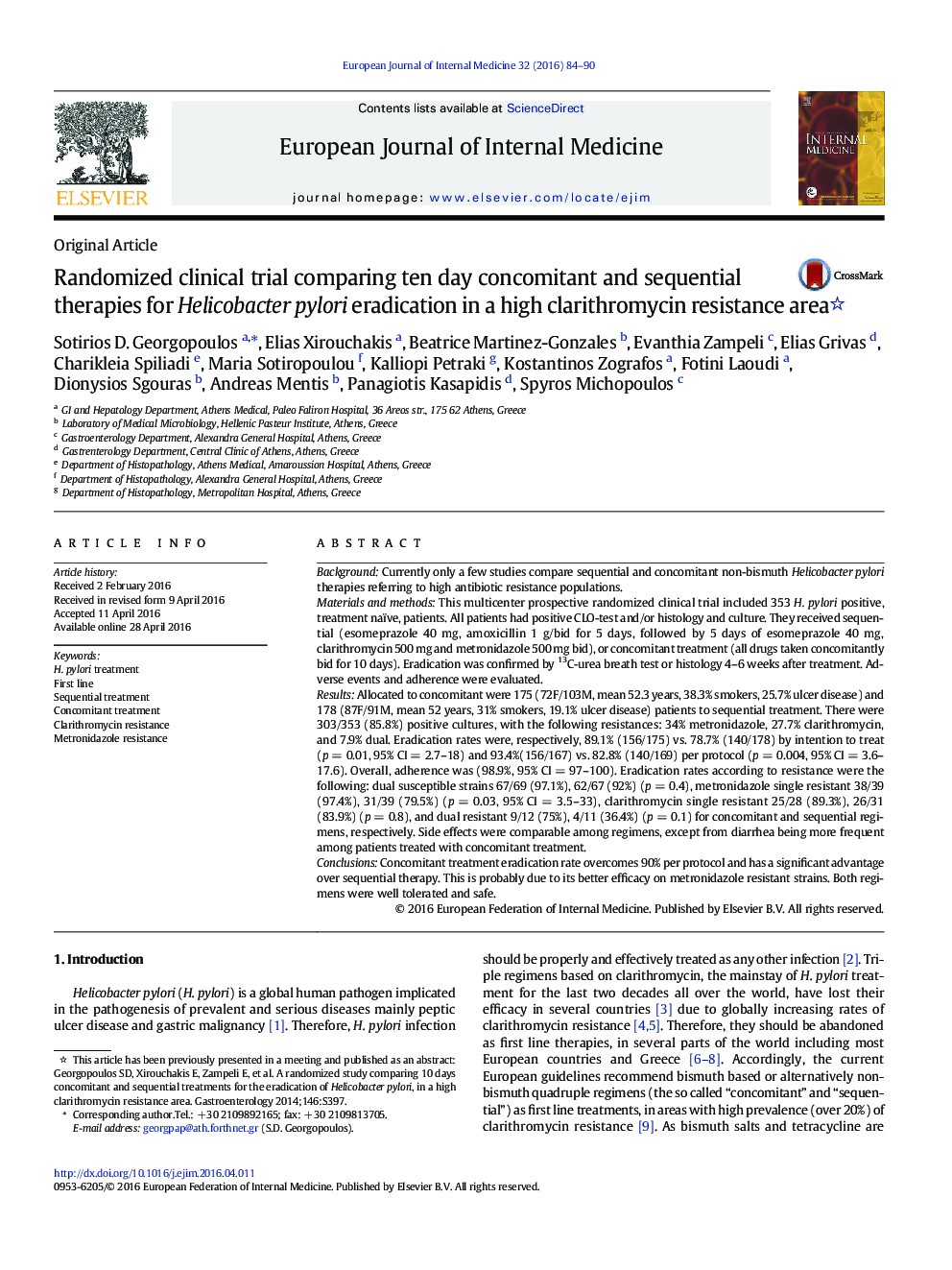| Article ID | Journal | Published Year | Pages | File Type |
|---|---|---|---|---|
| 3465943 | European Journal of Internal Medicine | 2016 | 7 Pages |
•Ten day concomitant regimen overcomes 90% per protocol H. pylori eradication rate.•Sequential regimen has a significantly lower success rate well below 90% per protocol.•The latter should be avoided as H. pylori treatment in high resistance areas.•Concomitant regimen was more efficacious on metronidazole resistant strains.
BackgroundCurrently only a few studies compare sequential and concomitant non-bismuth Helicobacter pylori therapies referring to high antibiotic resistance populations.Materials and methodsThis multicenter prospective randomized clinical trial included 353 H. pylori positive, treatment naïve, patients. All patients had positive CLO-test and/or histology and culture. They received sequential (esomeprazole 40 mg, amoxicillin 1 g/bid for 5 days, followed by 5 days of esomeprazole 40 mg, clarithromycin 500 mg and metronidazole 500 mg bid), or concomitant treatment (all drugs taken concomitantly bid for 10 days). Eradication was confirmed by 13C-urea breath test or histology 4–6 weeks after treatment. Adverse events and adherence were evaluated.ResultsAllocated to concomitant were 175 (72F/103M, mean 52.3 years, 38.3% smokers, 25.7% ulcer disease) and 178 (87F/91M, mean 52 years, 31% smokers, 19.1% ulcer disease) patients to sequential treatment. There were 303/353 (85.8%) positive cultures, with the following resistances: 34% metronidazole, 27.7% clarithromycin, and 7.9% dual. Eradication rates were, respectively, 89.1% (156/175) vs. 78.7% (140/178) by intention to treat (p = 0.01, 95% CI = 2.7–18) and 93.4%(156/167) vs. 82.8% (140/169) per protocol (p = 0.004, 95% CI = 3.6–17.6). Overall, adherence was (98.9%, 95% CI = 97–100). Eradication rates according to resistance were the following: dual susceptible strains 67/69 (97.1%), 62/67 (92%) (p = 0.4), metronidazole single resistant 38/39 (97.4%), 31/39 (79.5%) (p = 0.03, 95% CI = 3.5–33), clarithromycin single resistant 25/28 (89.3%), 26/31 (83.9%) (p = 0.8), and dual resistant 9/12 (75%), 4/11 (36.4%) (p = 0.1) for concomitant and sequential regimens, respectively. Side effects were comparable among regimens, except from diarrhea being more frequent among patients treated with concomitant treatment.ConclusionsConcomitant treatment eradication rate overcomes 90% per protocol and has a significant advantage over sequential therapy. This is probably due to its better efficacy on metronidazole resistant strains. Both regimens were well tolerated and safe.
